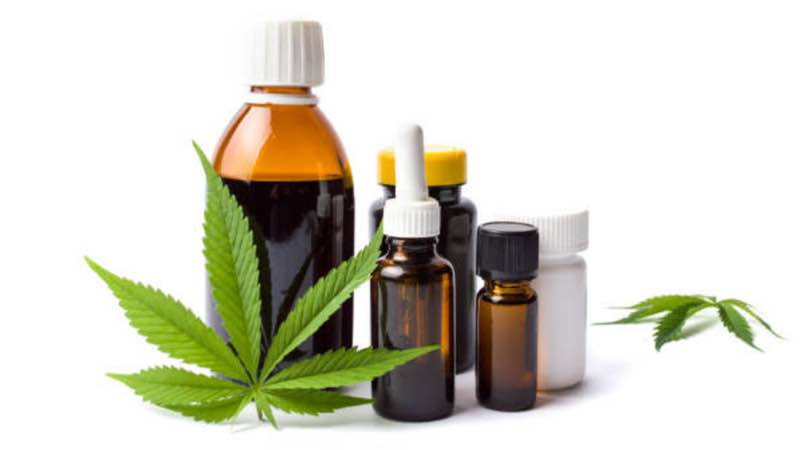With its legalization in 2018, marijuana, or cannabis, has become more widely accessible to adult Canadians for recreational use. Most people are familiar with marijuana’s usual effects, such as feelings of euphoria and relaxation; increased sensitivity to colour, sound, and taste; clouded thinking; and hunger. Beyond recreational use, however, cannabis has a number of important uses and applications in the biomedical industry.
Cannabis is a genus of flowering plants belonging to the family Cannabaceae. The active chemicals found in cannabis are called cannabinoids, the most notable of which is tetrahydrocannabinol, or THC, which is also the plant’s primary psychoactive compound, responsible for the common “high” feelings. Over 100 cannabinoids have been identified, including cannabidiol, or CBD.
The current and future applications for cannabis in medicine build on a long history of human understanding. The use of cannabis as medicine can possibly be traced back as far as 2737 BC, when, according to Chinese legend, Chinese Emperor Shen Neng prescribed marijuana tea to treat a plethora of illnesses, including gout, rheumatism, and poor memory. A more successful and reliable use can be attributed to Hua Tao, a Chinese physician who lived around 110 to 207 AD. Thought to be the first to use cannabis as an anesthetic, Tao allegedly mixed dried cannabis powder with alcohol to create a numbing powder used before surgery. In fact, the Chinese word for ‘anesthesia,’ mázui, literally means ‘cannabis intoxication.’
In the US, cannabis was used as a patent medicine during the 19th and early 20th centuries. However, the introduction of legal penalties for marijuana possession, and its criminalization in the second half of the 20th century, limited medical cannabis research as it became more difficult to obtain, even for scientific purposes.
By the late 20th century, more states in the US started to support prescription cannabis, finally allowing medicinal marijuana research to properly take off.
Carolyn Baglole, a professor in the Department of Medicine at McGill and member of the Research Centre for Cannabis, explained how CBD can be used in medicine.
“CBD has been studied fairly extensively,” Baglole said in an interview with The McGill Tribune. “There’s a lot of hope that CBD can be used therapeutically to treat a variety of different conditions, whether [that be] helping you sleep better or reducing inflammation and pain associated with rheumatoid arthritis.”
Yet, scientists still do not fully understand many compounds found in cannabis.
“It’s thought that perhaps the combination of these different compounds is responsible for the widespread beneficial therapeutic properties,” Baglole said.
When cannabinoids enter the nervous system, they bind to cannabinoid receptors CB1 and CB2, a class of cell membrane receptor proteins located throughout the body. This binding causes many of marijuana’s psychoactive effects. Cannabinoid receptors are a part of the endocannabinoid system, which plays a role in many physiological processes, including mood, memory, appetite, and the perception of pain.
“The endocannabinoid system is sometimes referred to as the ‘Goldilocks,’ because it’s a system that helps us feel just right,” Baglole said. “It regulates our temperature, our mood, our circadian rhythm, digestion, [which are] all important for homeostatic control.”
At McGill, research on the medical application of marijuana takes place at the Research Centre for Cannabis. Baglole is one of two co-leads for the biomedical sector of the Centre.
“We were granted centre status officially through the Faculty of Medicine one year ago,” Baglole said. “There was good momentum at McGill to organize a centre that would unite folks with diverse expertise in all things cannabis [….] It’s probably one of the most comprehensive cannabis centres in existence.”
Antonio Vigano is a professor in the Department of Oncology and Medicine and the other co-lead of the biomedical sector.
“We are looking at a lot of pre-clinical studies to understand the mechanisms of action and the chemical composition of medicinal cannabis, and the real challenge comes with trying to understand how medicinal cannabis can help our patients,” Vigano said. “In particular, we are looking at how to integrate medicinal cannabis in response to chronic conditions.”
More recently, cannabis has been used in cancer therapy. Though not a direct treatment, it can alleviate symptoms and improve the general quality of life for cancer patients. Doctors can prescribe it as medication for cancer patients experiencing adverse effects of chemotherapy, such as nausea, vomiting, and general cancer-related pain. According to Vigano, cannabis can be taken alongside more traditional cancer treatments.
“My usual response to cancer patients is that, if you feel better, and you can do more, you can be in better shape [as a result of medicinal cannabis] to receive traditional cancer treatments like immunotherapy,” Vigano said. “We know that one problem of cancer treatments is how difficult it is to go through them […] patients are very fatigued, they lack appetite, they’re in pain. All these symptoms can be treated and can benefit from medicinal cannabis.”
Baglole explained that THC is not as addictive as other compounds like opioids, but it has been shown that psychological addiction and dependence can arise from regular cannabis use. The American Psychiatric Association’s Diagnostic and Statistical Manual of Mental Disorders (DSM-5) classifies cannabis use disorder as an official condition, which gives rise to the question of whether patients who are prescribed medicinal cannabis can become dependent on it. US federal law lists cannabis as a Schedule I drug, meaning it is likely to be abused and lacking in medical value. This places it on the same level as heroin, ecstasy, and LSD. Unlike marijuana, however, over 65,000 heroin overdoses occurred in 2018, ecstasy is frequently cut with stronger and more dangerous drugs, and LSD is a powerful hallucinogen.
Lara*, a U2 Arts student at McGill, explained how daily use of cannabis began to affect their day-to-day life in an interview with the Tribune.
“Using marijuana every day really diminished its effect,” Lara said. “While it still prevented me from being very productive, a lot of the more enjoyable effects weren’t occurring.”
Lara also talked about what happened when they did not use cannabis.
“I would have a lot of trouble sleeping, and throughout the day, all I could think about was how much more comfortable I would be if I could smoke,” Lara said. “I was almost in a permanent state of relaxation, and I lost interest in many activities that I was passionate about before.”
While cannabis can negatively affect recreational users, Baglole emphasized that people who need cannabis for debilitating and chronic conditions like rheumatoid arthritis would benefit more than they would suffer. She stated, however, that with the research still in its infancy, it is difficult to provide concrete information regarding medicinal cannabis dependency.
In the future, the biomedical sector of the Centre hopes to answer major questions that remain about cannabis use. In particular, Baglole’s lab has been focussing on the outbreak of lung injuries that have arisen due to THC-containing vape devices, which are still not well understood in the medical community. Though not a medical application, examining the negative effects that cannabis-like products can have is important for better understanding the drug more comprehensively.
“We still don’t really know much about the inhalational effects associated with cannabis use, particularly vaping, so one of the directions my lab is hoping to take is regarding the safety and efficacy of lung-delivered cannabis products,” Baglole said. “Even for medical purposes, smoking is still the most common form of cannabis consumption. We want to know, ‘Is it safe?’ And if it is safe, how effective is it in alleviating symptoms with various conditions?”
There is still a lot of research to be done before cannabis can easily be administered in a medical setting, from understanding the chemistry of cannabinoids, to investigating cannabis’ effect on the brain, to grasping the social implications of cannabis’ long history as an illicit drug. However, with teams like the Research Centre for Cannabis, our understanding of medicinal cannabis is bound to improve, hopefully allowing cannabis to help patients that would greatly benefit from it.
*Name has been changed to protect the anonymity of the source.








